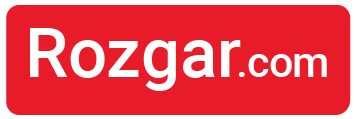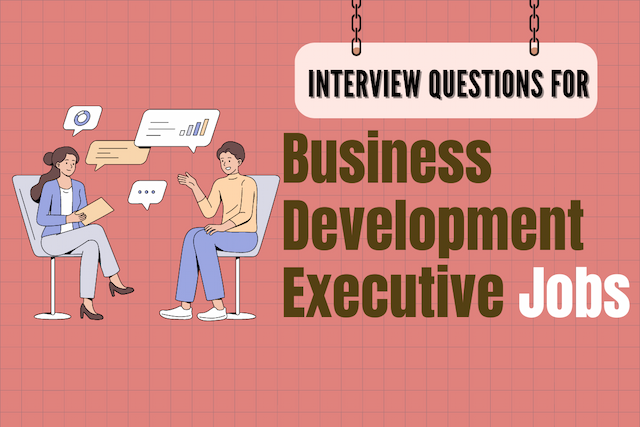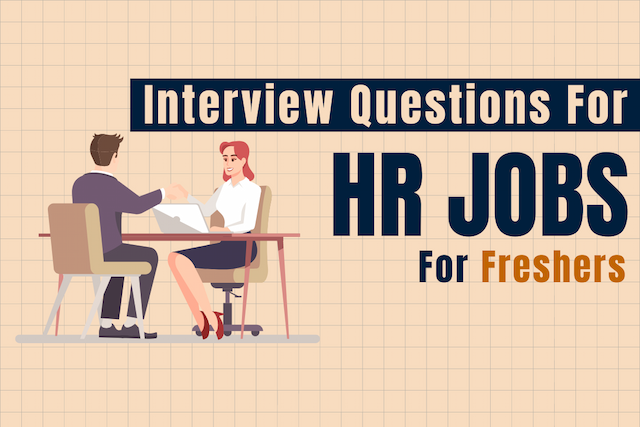
Do you want to become the graphics designer of your dreams? Whether you’re a veteran or just getting started on the long journey of your career, interview mastery is indispensable to winning over employers in today’s UX design and architecture jobs, where competition reigns supreme. In order to assist you as effectively prepare, we’ve compiled an extensive list of interview questions for a graphics designer and masterfully framed answers specifically.
Graphics Designer Interview Questions and Answers
1. Please share your story in graphic design and creative process?
During my profession, I have enhanced my graphic design knowledge with practical skills and constant learning. My creative process generally starts with the client’s aimed results, as well as his audience. And after that, I come up with the ideas of jotting down some sketches as rough drafts and iterating in order to fulfill my goal. Using these standard tools and keeping up with the trends on design has become part of my workflow.
2. Please, give us a description of the recent project which has been done by you with an emphasis on your role and contributions.
"Certainly. On a recent project for a tech startup, as part of my role contribution I helped the company to develop brand identity from scratch. I did extensive research to understand the company culture and audience. I took care of designing the logo, color palette, marketing collateral materials and UI elements to be consistent across all points in contact. In delivering a successful project, collaboration with cross-functional teams and incorporating feedback were essential.
3. How do you stay updated with the latest design trends and technologies?
Being a dedicated designer, I regularly take part in online communities and attend the conferences of the design industry, as well as enroll into workshops that help me to keep abreast with emerging technologies. In addition to this magazine subscriptions, follow up designers on social media platforms give one more insightful information regarding new creative solutions.
4. Can you talk about the hardest design problem that you try to run into and how did you solve this?
One of the challenges I had in particular was streamlining user experience on a rather complicated web application. I myself worked on this by carrying out user research and usability testing to find the pain points that needed improvement. By repeated prototyping process, we managed the navigation structure and work in collaboration with the UX / UI designers simplifies it; thus, clarifying visual hierarchy allows introducing interactive elements for a more convenient user’s journey. Her result was a Figure 3 intuitive and interactive interface that greatly enhanced user satisfaction.
5. Like what you did here is more of a learned behavior, as it could be interpreted constructively or destructively?
I appreciate critical advice as a chance to improve and refine. In response to feedback, I listen actively and inquire for clarification when required while being open-minded. I consider feedback as practical guidance to improve the quality of my papers. Making revisions that are influenced by feedback not only enhances design but also creates constructive relationships with stakeholders.
6. Give an example of effective collaboration with a fellow team member or the client?
Considering a collaborative project between the fashion client and one of my companies, communication—at all times—and alignment vision – throughout development were critical. Through establishing communication pathways, and routine monitoring of conversations in our academic project stages to ensure accountability and transparency everywhere within the implementation phases. By employing active listening and engaging the client in a dialogue, we came up with a breathtaking campaign that not only exceeded their demands but built our trustful relationship.”
7. While working on several projects at once, how do you naturally allocate work and manage time recently within your I?
In a hectic world setting, prioritization and effective time management are transferable abilities. I use project management tools such as Trello or Asana and provide detailed timelines, tasks lists. I limit one task working for only a few minutes, then the rest in this way, set real deadlines and organize time to be creative if something unexpected happens on the business level. Thus, productivity is maintained so that quality results are delivered timely.”
8. What do you think is the most vital component of UX design, and why does it significantly reflect in your designs?
I think empathy is a fundamental attribute of successful user experience optimization. Identifying user needs, motivations and pain points help me to design intuitive designs that respond to the users’ preferences. I use user research, personal development and usability testing so that the end-user’s interaction with a product becomes my friend; an empathic and predictive method. Through making accessibility and usability simple, focusing on it together with memorable feelings, I hope to provide thrilling user encounters.
9. More specifically, we would like to know how one should treat the comments of stakeholders who do not bring in their knowledge about design?
While dealing with stakeholders who may not be acquainted with the basic principles of design, I try to translate at least some aspects of their feedback into applicable points. I listen actively to understand the situation from their point of view and use probing questions for clarifying expectations as you want some worries or guidelines with this. Besides that, one needs an image like a prototype etc. Through decoding design jargon and discussing the driving forces, I narrow down between aesthetics in business objectives guaranteeing consistency and fulfillment.
10. How about a situation where you had to strike between creative freedom and conforming with brand policies?
One of my previous roles involved redesigning a firm’s website while observing strict brand guidelines. Among the things I valued greatly was freedom to be creative but during those times even though satisfied with such liberty, there were no concerns reversing these two irrespective of relative lack for creativity dependent on generational issues. In order to maintain an equilibrium, I did a thorough analysis of the brand guideline and highlighted areas that could be interpreted creatively while suggesting design solutions for carry through our vision. By working closely with brand team, getting approvals at key milestones I managed sto bring originality while preserving the integrity of a well-known brand.”
11. How does one go about designing for different devices and varying screen sizes in order to achieve consistency?
The designing is done keeping various devices and screen sizes in mind which needs both responsive as well as adaptive approach. I start off with the content hierarchy and need for user interactions on context-specific devices. Employing practices like adaptive layouts, method queries and scalable vector graphics I guarantee that designs smoothly transition throughout many resolutions & form factors. Through continued testing on different devices and platforms, I was able to spot any usability or layout problems that would be corrected in order to deliver an all-around seamless user-friendly experience.”
12. What role do user personas play in your design process, and how do you create them?
Using user personas, I am able to gain an understanding into the psychological makeup of different demographics enabling me to empathize with taps audience needs. The application of persona is the depiction I create after synthesizing user research data, demographic information and behavioral insights into fictional but representative profiles. At its basics, every persona consists of important standards that an individual identifies with, plans to get around the world and emanates a specific identity by using various key patterns. The personas as hurled are more likely going back across the design process even in future looking at their high results following solutions that had been planned from them. Through designing with the perspectives of personas, I ensure that suitable solutions are offered in order to meet user needs and preferences which leads to the effectiveness of my designs.
13. What are the methodologies that you use in usability testing, which still part of your designs and how?
With the process of usability testing, I obtain different information on some assumptions that I have destroyed users with actual issues pen to help me assess concrete feedback from real people. I create test scenarios and tasks that are consistent with what the client wants to achieve or users’ needs, recruit participants who represent various groups from whom the target audience is drawn and watch how they behave when using prototypes or real products. This involves the use of information that speaks to user behavior, feedback, and performance metrics among others so as to understand elements where strengths are pegged on while at its areas for improvement can also be pointed out. Either the iterative refinement facilitated by test output establishes that designs evolve in an evolutionary way to meet or exceed user expectations and requirements.
14. Can you discuss a time when you had to troubleshoot technical challenges during a design project?
Within a recent project, I faced a technical challenge for image assets optimization aiming at attaining the best visual quality possible without adversely affecting web performance. This I found out by my research to overcome this, relating image compression best practices file formats and lazy loading methodologies. With the developers, I made implementations like responsive breaks, lazy loading scripts image optimization tools. By continually repeating the testing and optimization phases, we succeeded in significantly reducing page load times thereby improving overall performance to make users experience higher.
15. How do you plan to design for accessibility and what considerations are top of mind in your approach?
Designing for accessibility is an important component in developing accessible and user-friendly applications. Accessibility is important to me when I design websites as the software allows it, in doing so, factors such as Colour contrast and text clarity are prioritized together with keyboard navigation and compatibility with screen readers. In my practice, I apply the standards of web accessibility including WCAG (Web Content Accessibility Guidelines) and audits using available accessibility evaluation tools to detect possible barriers. Through promoting universal design principles and conducting usability tests with users who are disabled, I seek to produce designs that are easy for all groups of people.”
16. How do you incorporate motion and animation into your designs, what factors are given priority?
The addition of motion and animation to the interactive design would also lead to better user interaction while offering feedback. I accomplish this by first analyzing the reason and condition of animation with relation to user experience. In order for the experience to be seamless and easy on user, I focus specifically on factors such as animation duration, easing functions adherence with brand aesthetic. Through usability testing and receiving response on the animation effects, I am able to fine tune designs so that they are both appealing as well as functional.
17. Could you talk about a situation whereby you had to work with developers in order to translate your design vision?
Communication with developers is required to ensure proper implementation of the solutions. On a previous project, I helped the development team to translate design specification and code them. Through clear documentation and prototyping, I delivered assets in developer-friendly formats. The iterations through code review, implementation challenges and feasibility constraints led to a symbiosis between design and technology which resulted in an aesthetically pleasing product.
18. What are your approaches in balancing aesthetics and usability of designs, particularly when it comes to complex interfaces?
Attaining the balance between form and function is closer to walking a tight rope, especially when dealing with interfaces that are quite complicated. In visual design, I focus on clarity and congruence with hierarchy but still make functionality easy to comprehend. Using the principles of surrendered design, such as information architecture, content organization and progressive disclosure I make complex interactions simple for users while guiding them through their way around interface.
This method of design process through iterative prototyping and user testing is used in validating the holding of good decisions while balancing aims for creating beautiful yet functional designs.
19. Can you discuss a time when you had to adapt your design approach to meet tight deadlines or changing project requirements?
With the busy environment inherent in graphic design due to existing tight deadlines or changing project demands, adaptability can be deemed important. Under such circumstances, I would rather adapt to have quality solutions. I simplify the design process using already available assets, templates, and those from your design systems when applicable. Effective communication with stakeholders and project management tools enable me to reprioritize tasks, adjust timelines, and allocate resources efficiently, ensuring timely delivery without compromising on creativity or quality."
20. How do you approach staying organized and managing files and assets in collaborative design projects?
The organized way to keep from getting tangled in design projects is staying organized and managing files well. I work systematically by creating a regular naming of files, file structure folders and versioning control systems from the onset. Using cloud based collaborative platforms like Adobe Creative Cloud libraries or Figma allows remote real-time collaboration, version history tracking and centralized asset management. Through regular communication of team members on file updates, weaving in dependencies and the project milestones aligned ensuring non-disruption to workflow.”
| Latest Category Jobs | ||
|---|---|---|
| Job Information | Apply Job | |
UI/UX cum Product Designer (work from home)(0-3 years) | ||
Animator For Automotive and Engineering animations(0-2 years) | ||
Graphic Designer Internship(0-1 years) | ||
Memory Design Engineer(2-13 years) | ||
Conclusion
To conclude, these interview questions for a graphics designer are based on technical competence projected by intelligent and creative illustriousness coupled with originality accented ingenuity married to the right ability of its verbal delivery. In short, by mocking common interview questions and describing your experience and methodology with confidence you’ll be ready to leave a mark on potential employers. You can occupy opportunities diligently and passionately in the juicy fronts of graphic design as well as UX design and architecture jobs.
If you wish to explore endless opportunities within the field, my suggestion is that one should seize platforms such as Rozgar.com where numerous positions are available for talented individuals like yourselves. Thus, perfect the portfolio you submit and practice your answers diligently, then begin marching toward victory without ever doubting yourself.
Visit our website to get more information regarding job opportunities!



